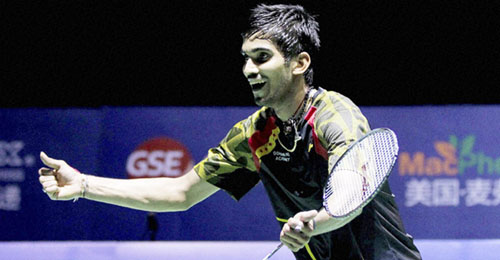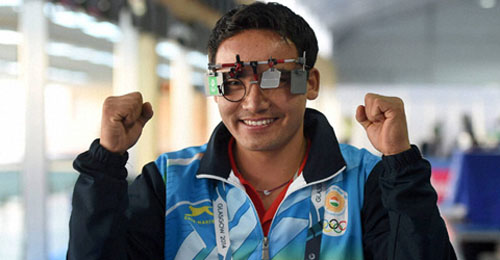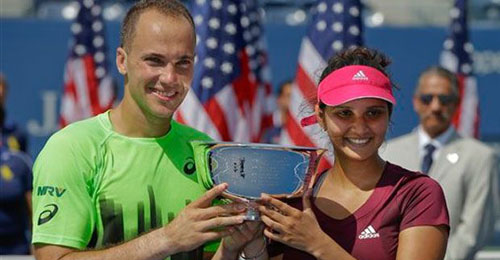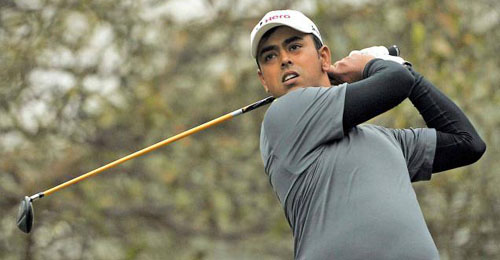This was a great year for Indian sports

It has been an intense and eventful year for Indian sport, with seasoned superstars and new names grabbing headlines. Traditionally, the second year after the Olympics assumes great significance for Indian sport, as it is a chance for athletes to put on their best show at the Commonwealth Games and the Asian Games.
But then, success for Indian sportspersons is not just about doing well in these two major multidiscipline extravaganzas. It also has a lot to do with how they have fared in major international competitions in their respective disciplines at home and abroad.
This has not been an easy year for many Indian athletes, thanks to the politics of sport. If the Indian Olympic Association versus International Olympic Committee tussle dragged on for quite a while before being settled amicably, boxing still continues to suffer. Add to it inadequate funding from the sports ministry, and it will be wrong to expect the athlete to be firing on all cylinders at big events like the Commonwealth Games and the Asian Games.
In India, those who lay down policies in sport are either ignorant or innocent of sport. Sample this: before the teams left for the Asian Games in Incheon, South Korea, the ministry stipulated that athletes could stay for only five days at government cost, including the day of competition. At the same time, when a decision was made to prune down the jumbo contingent for the Asiad, doing away with managers was detrimental.
Against all these odds, if the Indians won an aggregate of 64 medals at the Glasgow Commonwealth Games, it was not a poor effort. Armchair critics always try and compare the medal tally with what the Indians achieved in the 2010 New Delhi edition, but few are aware that the funding pattern for athletes had changed.
Then again, a haul of 57 medals in Incheon was seen as poor because the number of gold medals was only 11. There were ten silver medals and 26 bronze medals. It’s easy to ask why we cannot do as well as China, South Korea and Japan.
Funding, training, exposure tours, availability of best coaches and so on — there are many issues still plaguing the average Indian athlete.
Amidst all this gloom, there were superlative performances as well in track and field at Incheon which were defined by the gold standard of Seema Punia in discus throw. Seema, who had been under a dope cloud for close to a decade, had done well at the Glasgow CWG also, where she won silver.
In the corresponding men’s event, Vikas Gowda became the first Indian man to clinch a track and field gold at the CWG since Milkha Singh in 1958. He followed it up with a silver in Incheon.
At the same time, the women’s 4x400m relay squad — comprising Priyanka Panwar, Tintu Luka, Mandeep Kaur and MR Poovamma — grabbed glory with an against-all-odds showing on the same day on which the men’s hockey team won a historic gold medal by defeating Pakistan.
The sparks of brilliance from individuals in badminton, golf, wrestling, shooting and boxing were defined by stellar performances at the World Cup, World Championships, badminton Super Series events and the biggest platforms in tennis.
Saina Nehwal made headlines, not just because she walked out of the Gopichand academy to find a new guru in Vimal Kumar. She won the Indian GP, the Australian Open Super Series and a big title at the China Open.
The depth in the men’s section in badminton was defined with Parupalli Kashyap sealing gold at the Glasgow Commonwealth and young Turk Kidambi Srikanth shocking the field to win the China Open Super Series Premier event to finish the year as the world number four.
In boxing, while everyone expected Mary Kom to win gold in Incheon, which she duly did, two unknown faces answering to the names of Sarjubala Devi and Saweety won bronze medals at the world championship at Jeju Island, South Korea.
Golf produced some good results as well with Anirban Lahiri now the biggest Indian name. He won two titles and also competed at the British Open and the PGA Championship, though Rashid Khan and Arjun Atwal also showed they are pros who can be counted upon.
Shooting did not have a spectacular year, but one man who I feel should take the title of "The Champion" in 2014 is pistol shooter Jitu Rai.
Three World Cup medals, a silver at the World Championship at Granada, Spain, one gold medal each at the Commonwealth Games and the Incheon Asiad mark him out as a front-runner for next year’s Rajiv Gandhi Khel Ratna award.
Sania Mirza impressed with her top finish at the WTA Tour Finals with Cara Black. She also contributed to India’s medal tally at the Asiad.
The hockey team won gold at the Asiad, qualifying for the Rio Olympics, but a lot of work is still needed.
Hockey
- The men’s team won the gold medal at the Incheon Asian Games to qualify automatically for the 2016 Rio Olympics. The women’s team clinched the bronze.
- The men’s team took home the silver medal at the Glasgow Commonwealth Games, after defeat to Australia in the final.
- Had a fourth-place finish at the Men’s Champions Trophy in Bhubaneswar.
- Defeated world champions Australia 3-1 in a four-match series Down Under.
Badminton
- Kidambi Srikanth won China Open Super Series Premier and reached semi-finals of Super Series Finals. Reached number four in world rankings, first Indian male to do so since P Gopichand.
- Saina Nehwal won India GP Gold, Australian Open Super Series and China Open Super Series Premier. Reached semi-finals of Super Series Finals. Ended the year at number four.
- PV Sindhu won bronze at the World Championships, Asian Championships and CWG, and played a stellar role in team winning bronze in Uber Cup and Asian Games. Won Macau Open.
- Parupalli Kashyap won gold at CWG becoming the first Indian male shuttler in 32 years to triumph at the Games. The bronze at the Uber Cup and the Asian Games were maiden medals for India’s women’s team at the events.
- HS Prannoy won the Indonesian Masters Grand Prix Gold title Arvind Bhat won German Open while Ajay Jayaram clinched the Dutch Open.
 |
| Kidambi Srikanth became the first Indian male to reach No 4 in world rankings since Pullela Gopichand. |
Shooting
- Jitu Rai was the star of the year, winning a silver medal in air pistol at the Munich World Cup, followed by a gold (air pistol) and silver (50m pistol) immediately thereafter at the Maribor World Cup. He then won a gold in 50m pistol at the Commonwealth Games in Glasgow, and followed it up with a silver medal (50m pistol) plus an Olympic qualification spot at the World Championships in Granada, Spain. He then set the Asian Games ablaze with a gold in 50m pistol in Incheon.
- Abhinav Bindra bid adieu to the CWG and Asian Games with a gold and a bronze respectively in air rifle. The shooters finished with four gold, nine silver and four bronze medals at the CWG, and one gold, one silver and seven bronze medals at the Asiad.
 |
| Jitu Rai, the shooting star of 2014. |
Tennis
Sania Mirza and Cara Black won three WTA Tour titles from seven finals, and claimed the season-ending WTA Finals trophy. Sania reached her career-best doubles ranking of five, and also won her third mixed doubles Grand Slam, clinching the US Open title with Bruno Soares. At the Incheon Asian Games, where India won five medals, Sania and Saketh Myneni won the mixed doubles gold, while Sania and Prarthana Thombare won the women’s doubles bronze.
 |
| Sania clinched the US Open mixed doubles title with Brazil's Bruno Soares. |
Golf
- Anirban Lahiri: Two titles on the Asian Tour — CIMB Niaga Indonesian Masters and the Venetian Macau Open; India’s best-ranked golfer at No 65; played at the PGA Championship and the British Open; qualified for the 2015 British Open and the European Tour.
- Rashid Khan: Two titles on the Asian Tour — SAIL-SBI Open and the Chiangmai Golf Classic, Thailand.
- Shiv Kapur: Best Indian at a Major in 2014, tied 23rd at the US Open, and retained his playing card for the European Tour.
 |
| Lahiri is India's best golfer at No 65. |

